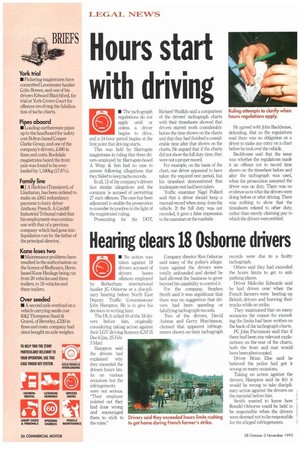ours start with driving
Page 28

If you've noticed an error in this article please click here to report it so we can fix it.
• The tachograph regulations do not apply until or unless a driver begins to drive, and a 24-hour period begins at the first point that driving starts
This was held by Harrogate magistrates in ruling that three drivers employed by Harrogate-based A Wray & Son had no case to answer following allegations that they failed to keep tacho records.
In all, 12 of the company's drivers face similar allegations and the company is accused of permitting 27 such offences The case has been adjourned to enable the prosecution to consider its position in the light of the magistrates' ruling Prosecuting for the DOT, Richard Wadkin said a comparison of the drivers' tachograph charts with their timesheets showed that drivers started work considerably before the time shown on the charts and that they had finished a considerable time after that shown on the charts. He argued that if the charts did not show the full duty time, they were not a proper record For example, on the basis of the chart, one driver appeared to have taken the required rest period, but his timesheet demonstrated that inadequate rest had been taken.
Traffic examiner Nigel Pollard said that a driver should keep a manual record when away from the vehicle. If the full duty was not recorded, it gave a false impression to the examiner at the roadside.
He agreed with John Backhouse, defending, that as the regulations read there was no obligation on a driver to make any entry on a chart before he took over the vehicle.
Backhouse said that the issue was whether the regulations made it an offence not to record time shown on the timesheet before and after the tachograph was used, when the prosecution asanned the driver was on duty There was no evidence as to what the drivers were doing before or after driving There was nothing to show that the timesheets related to other duty rather than merely claiming pay to which the drivers were entitled.
































































































